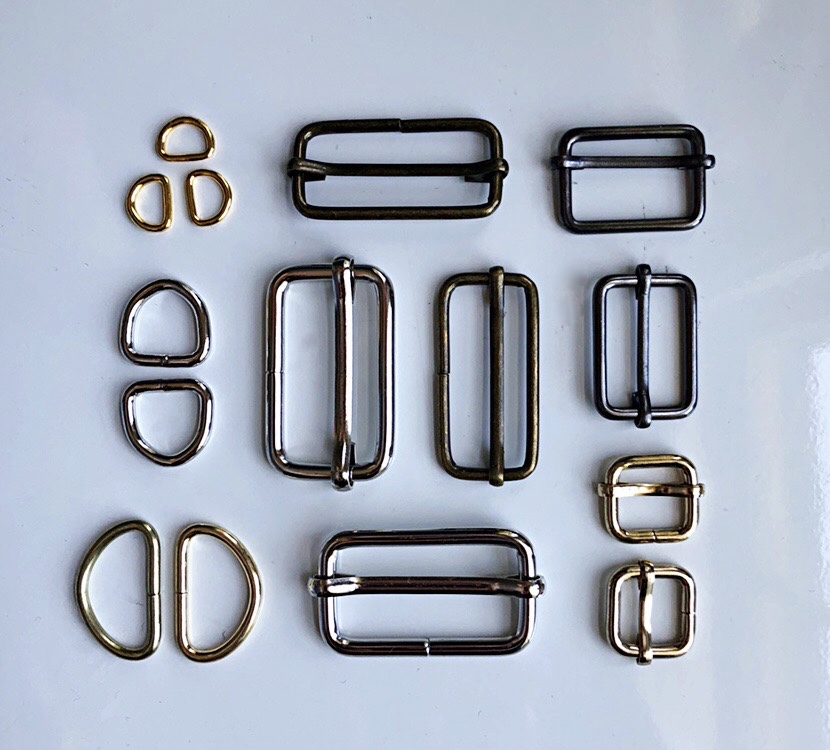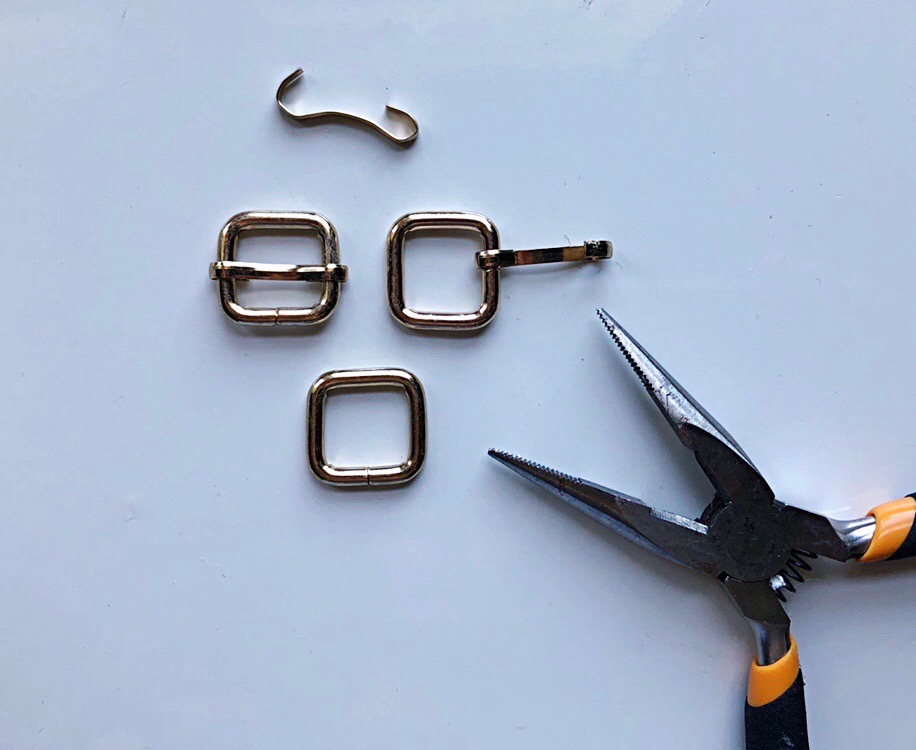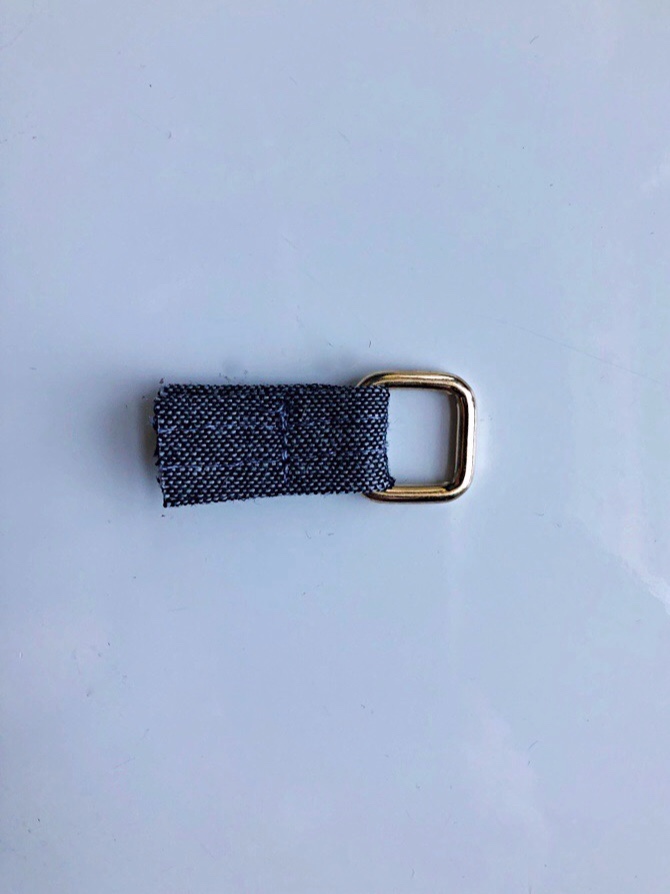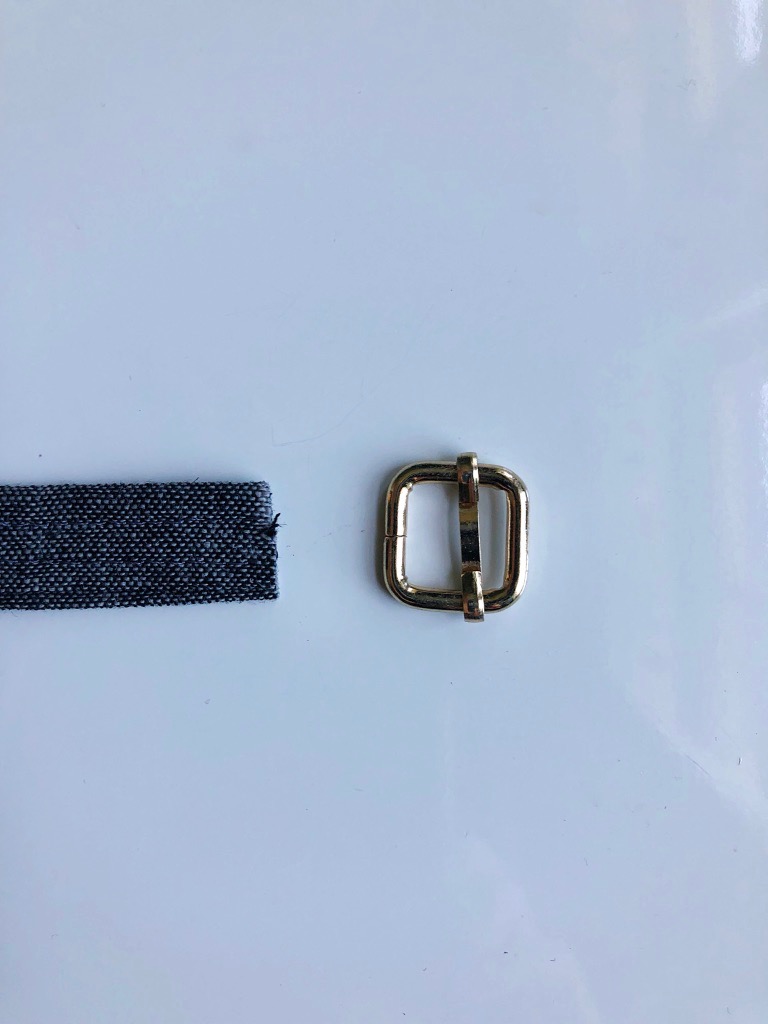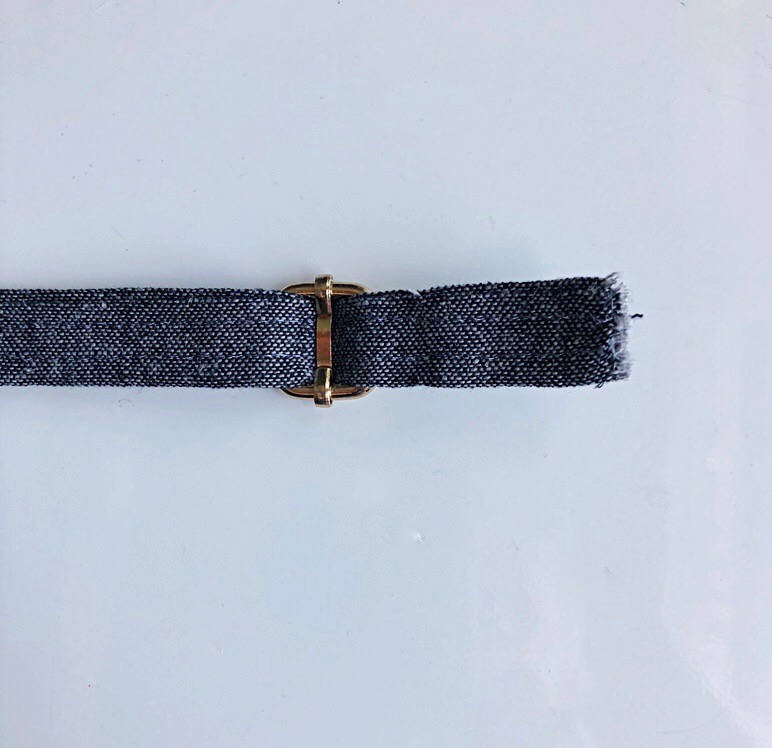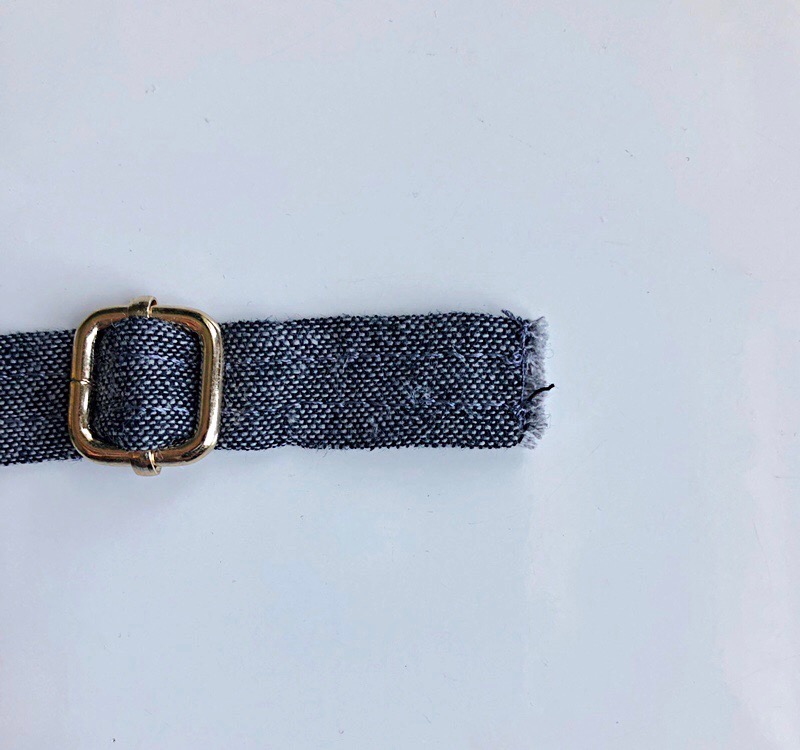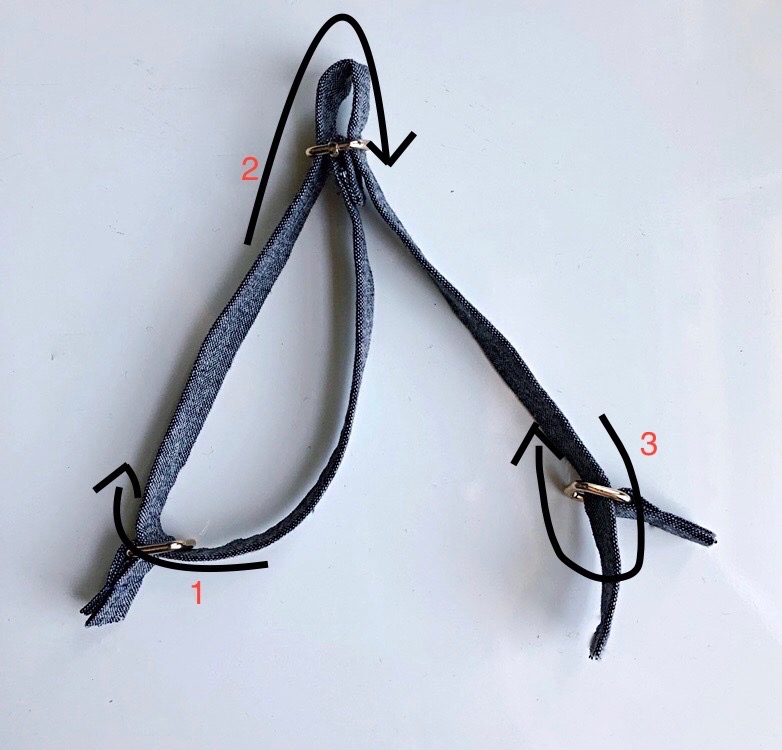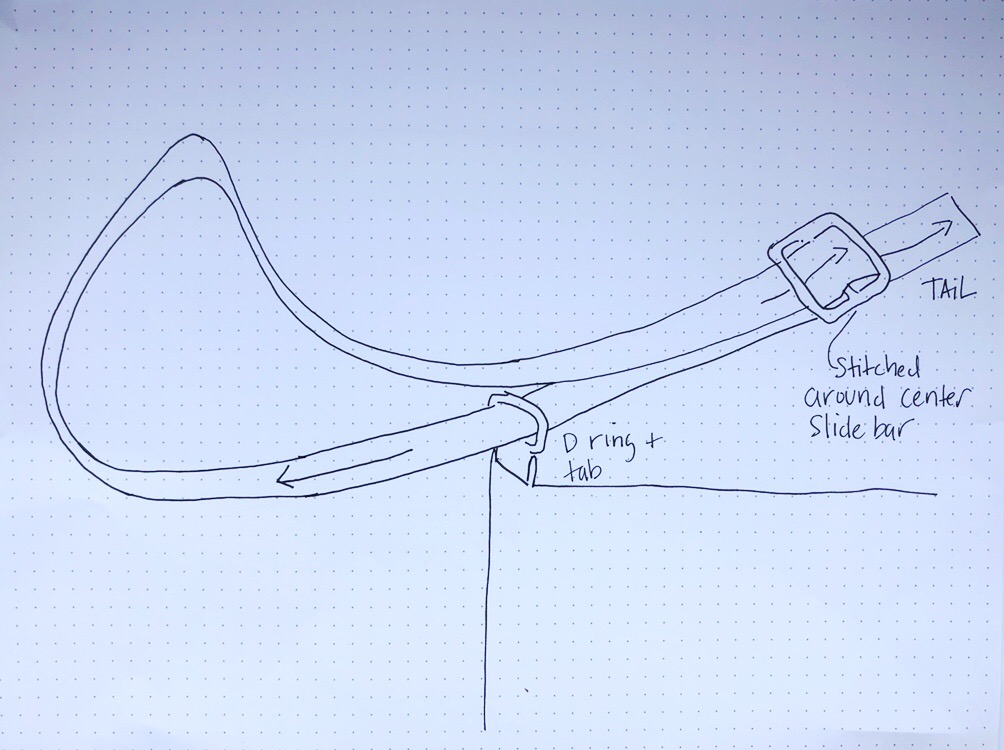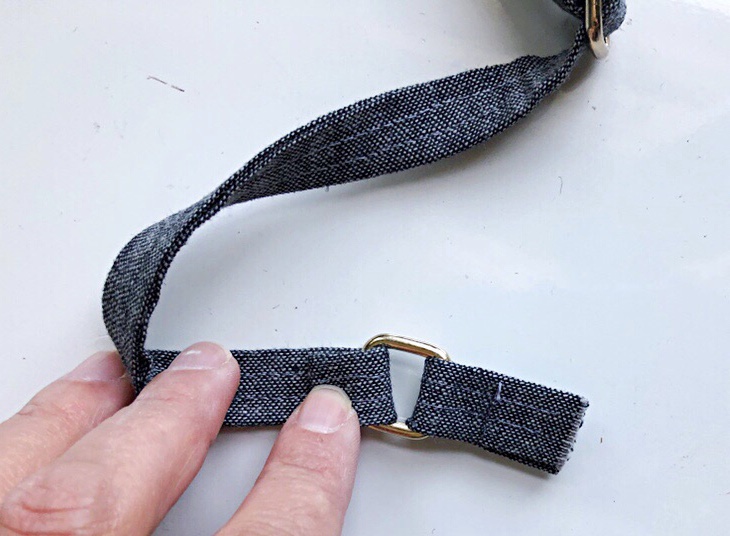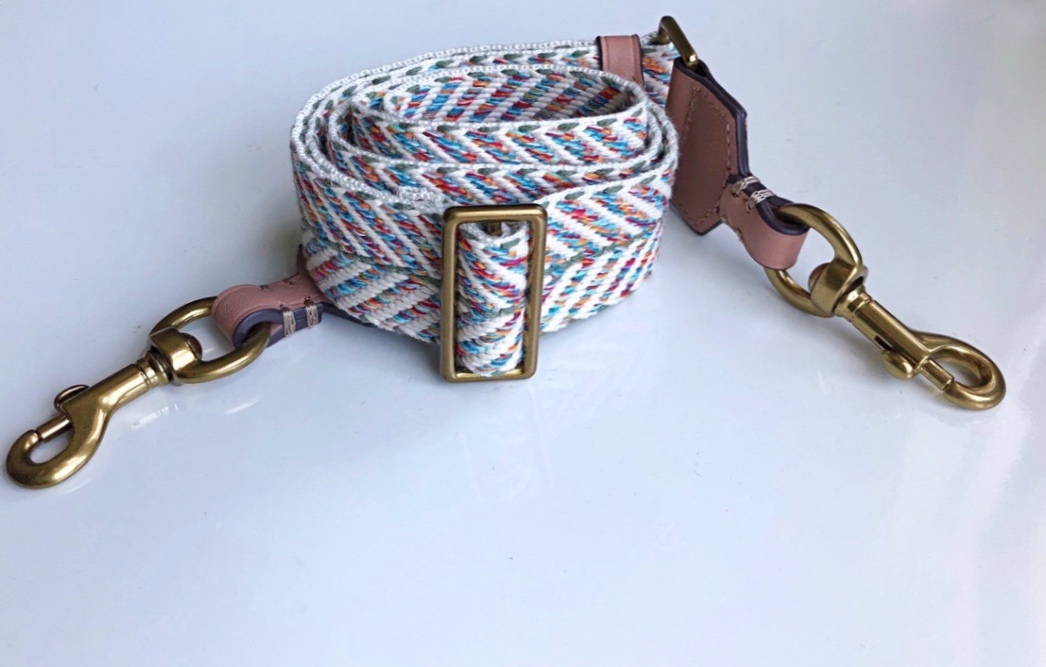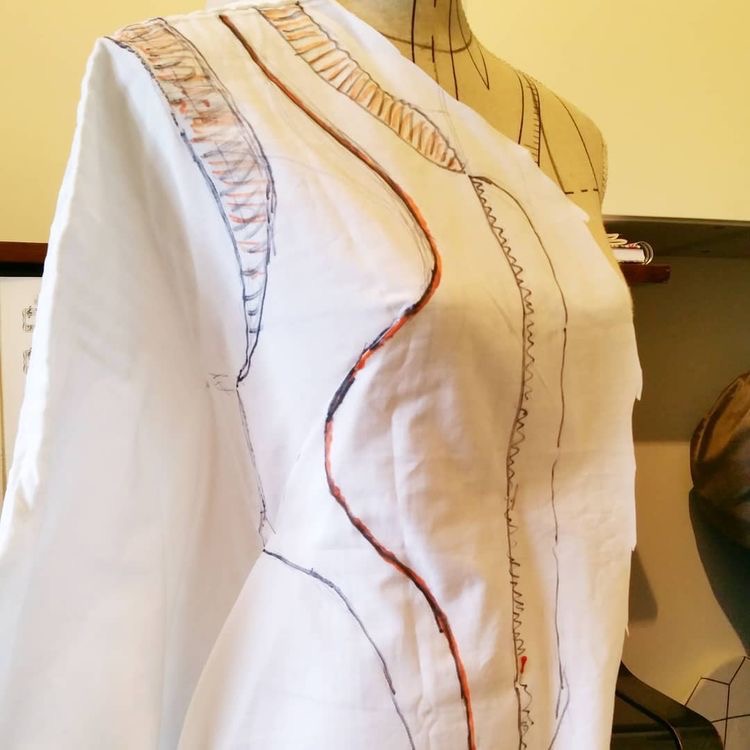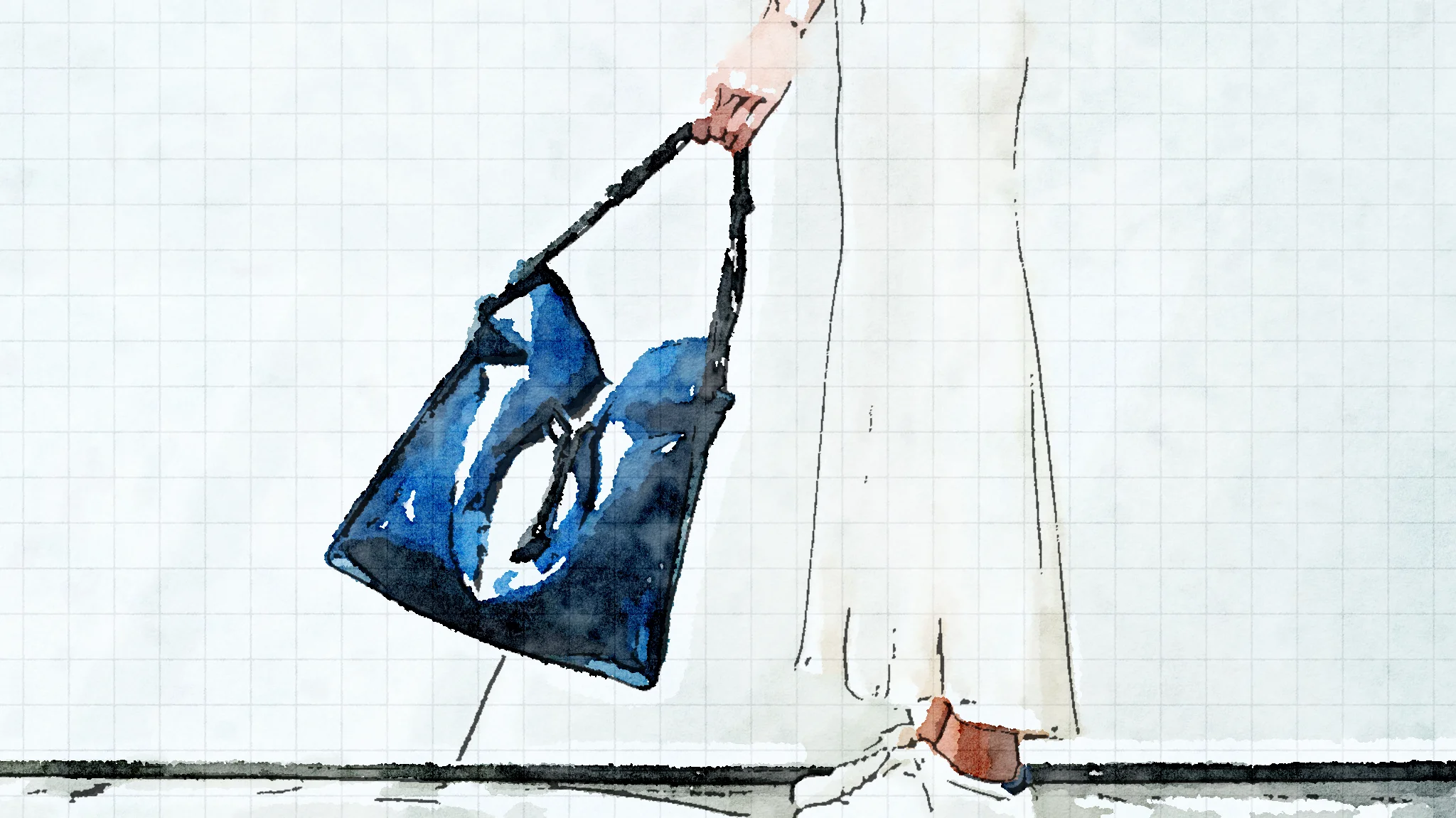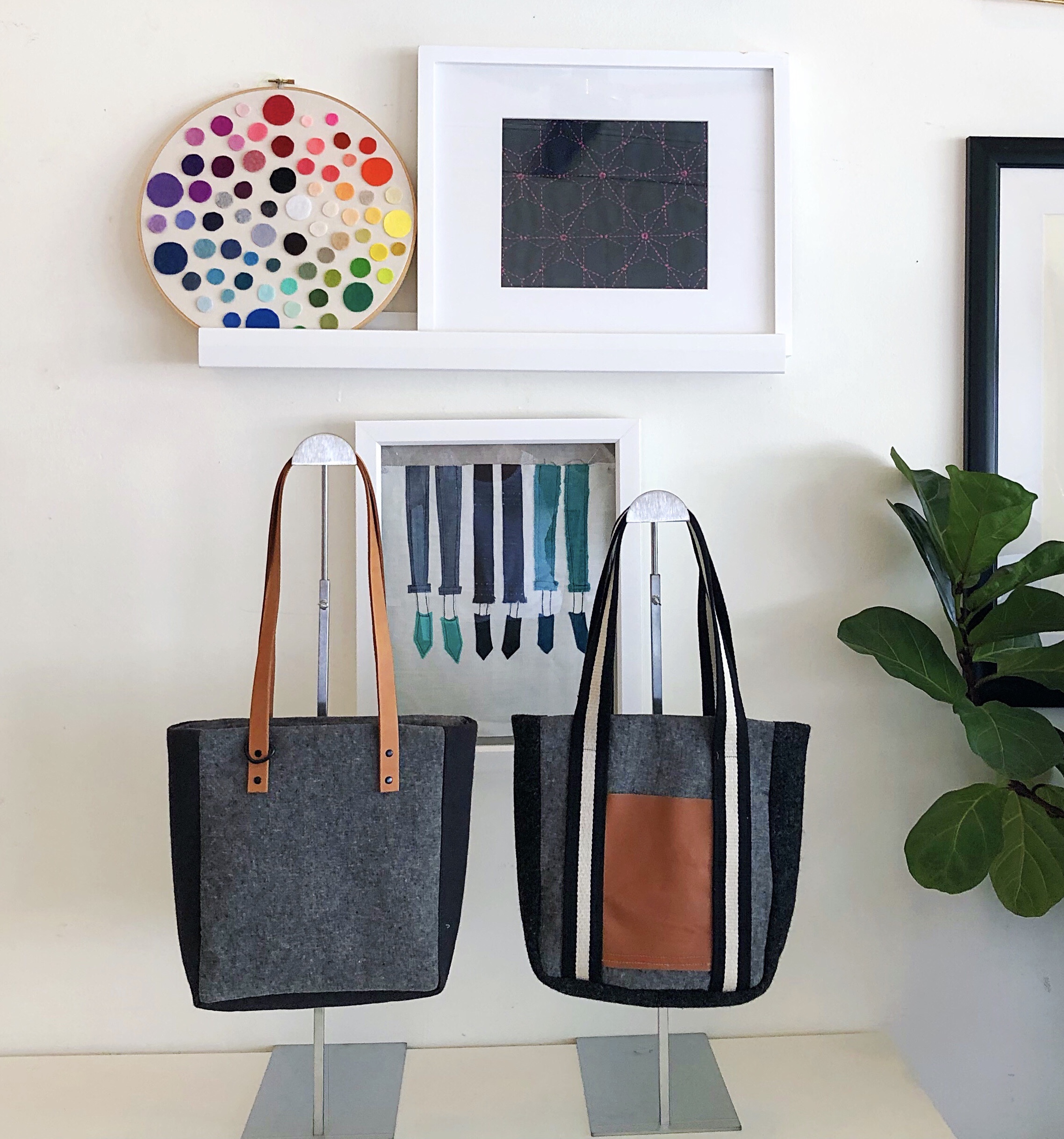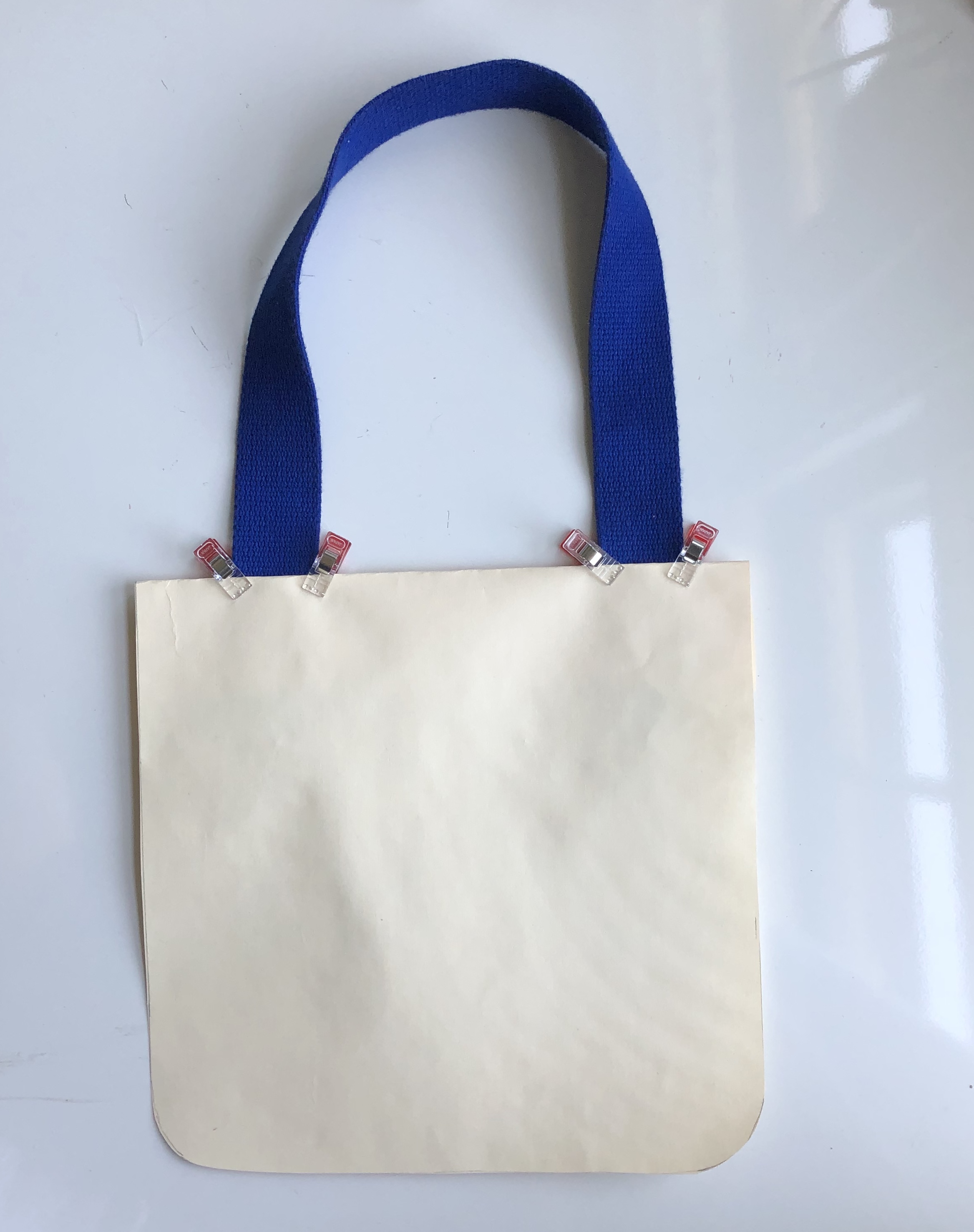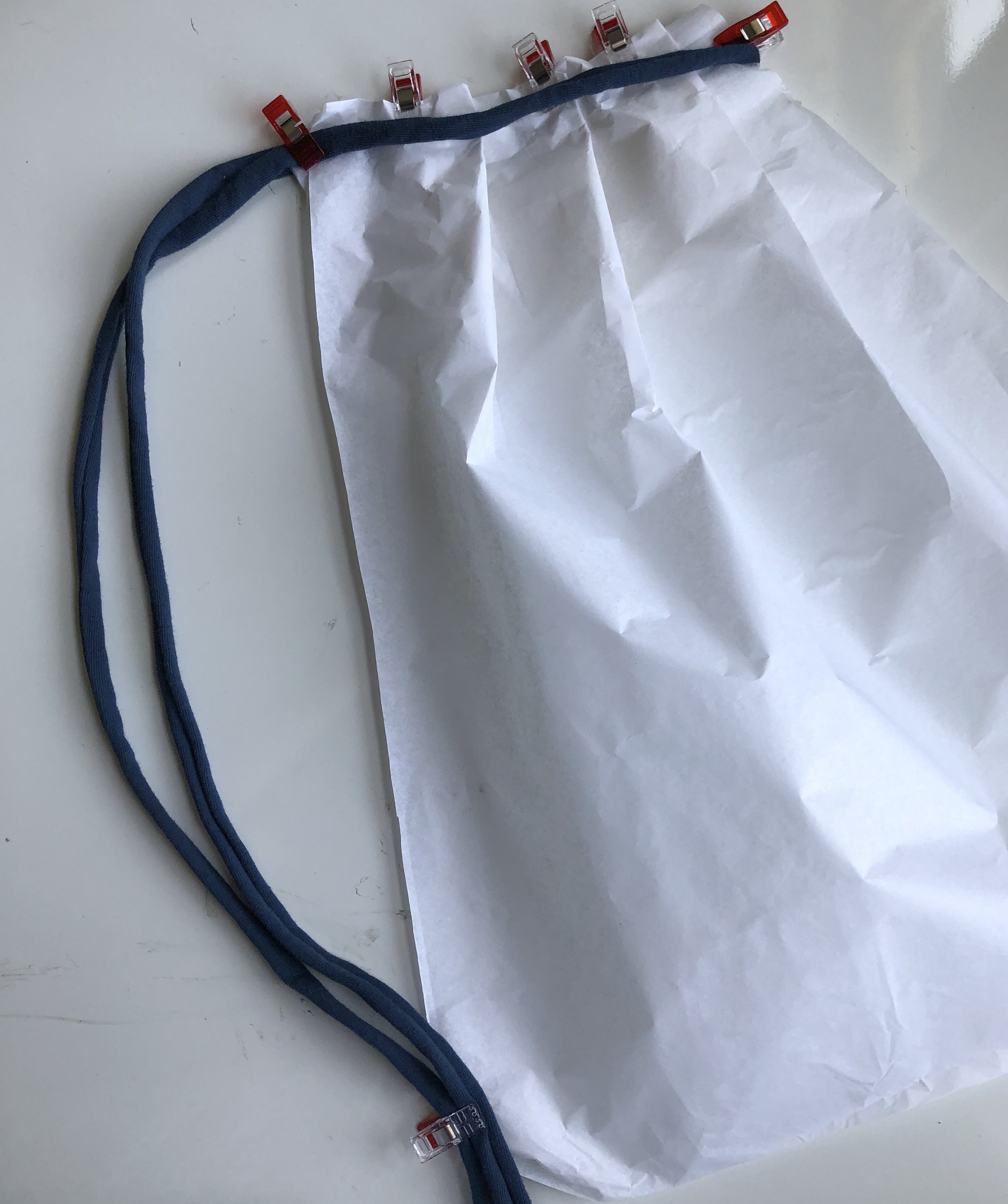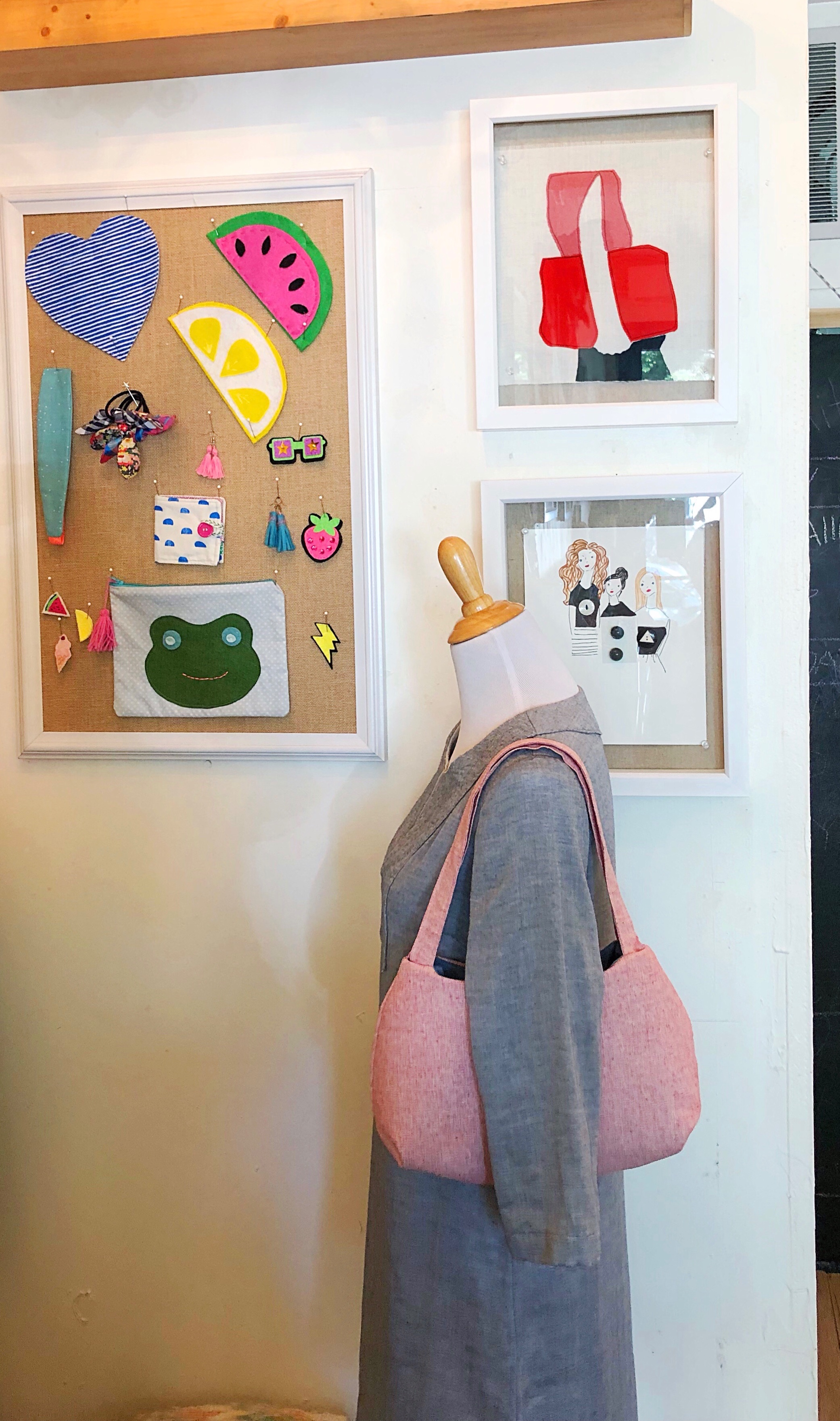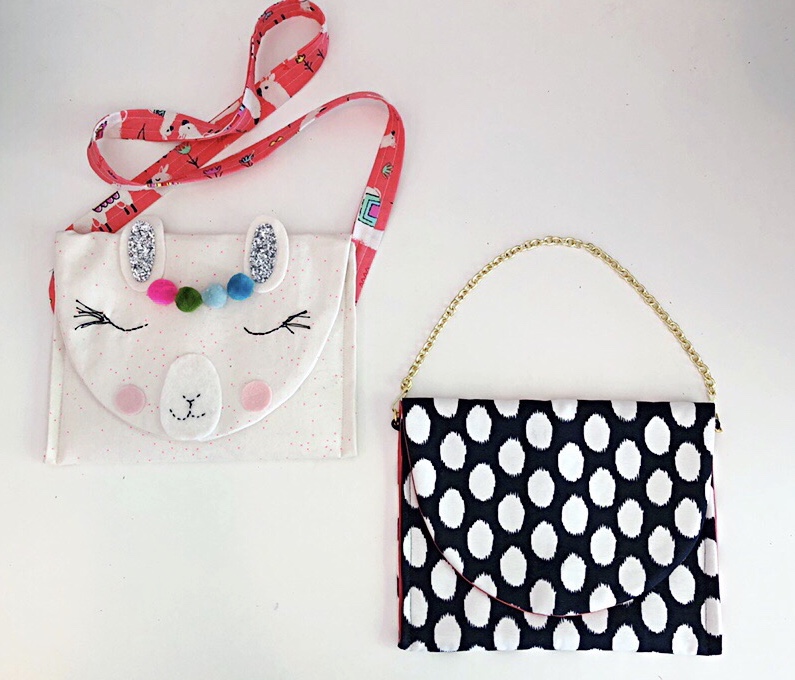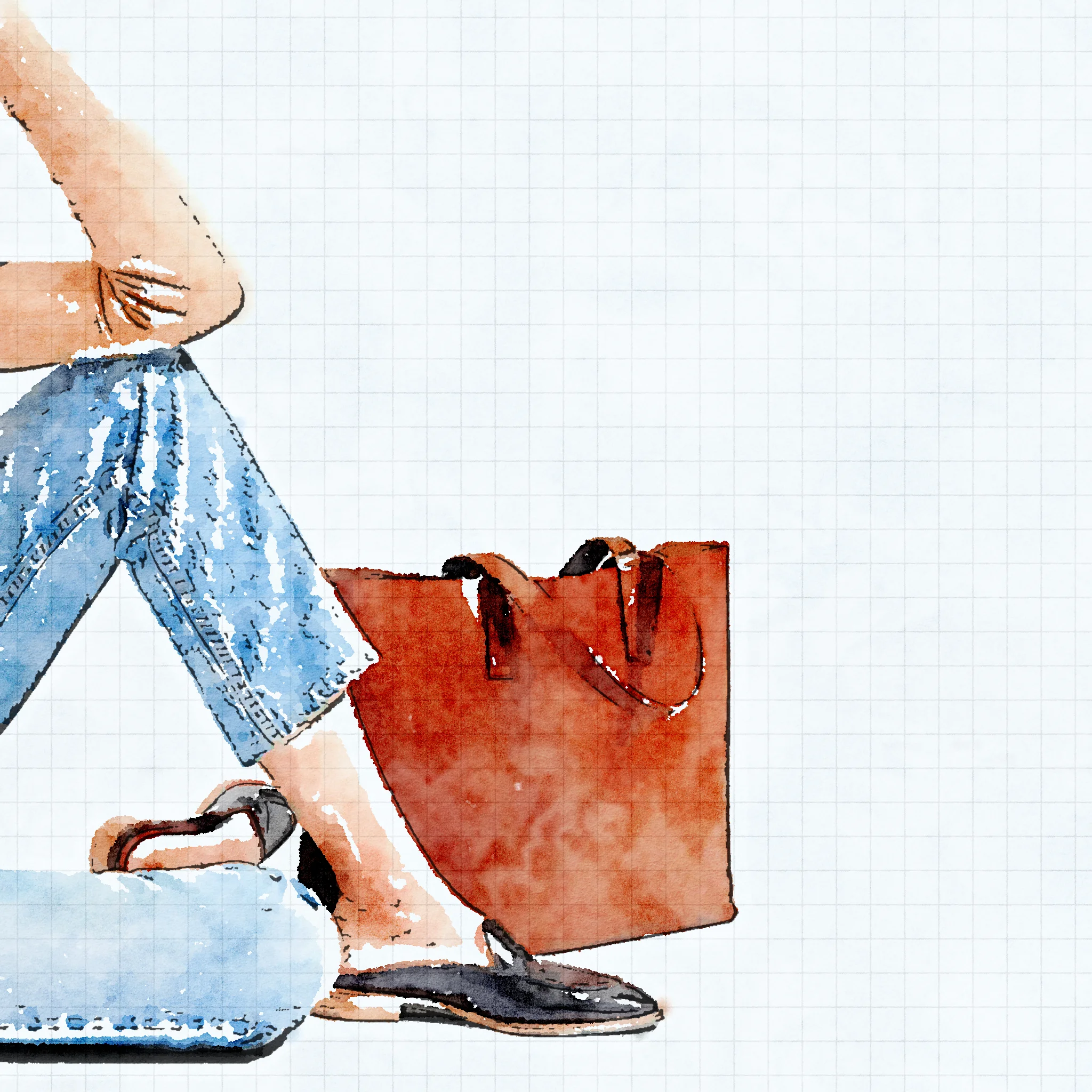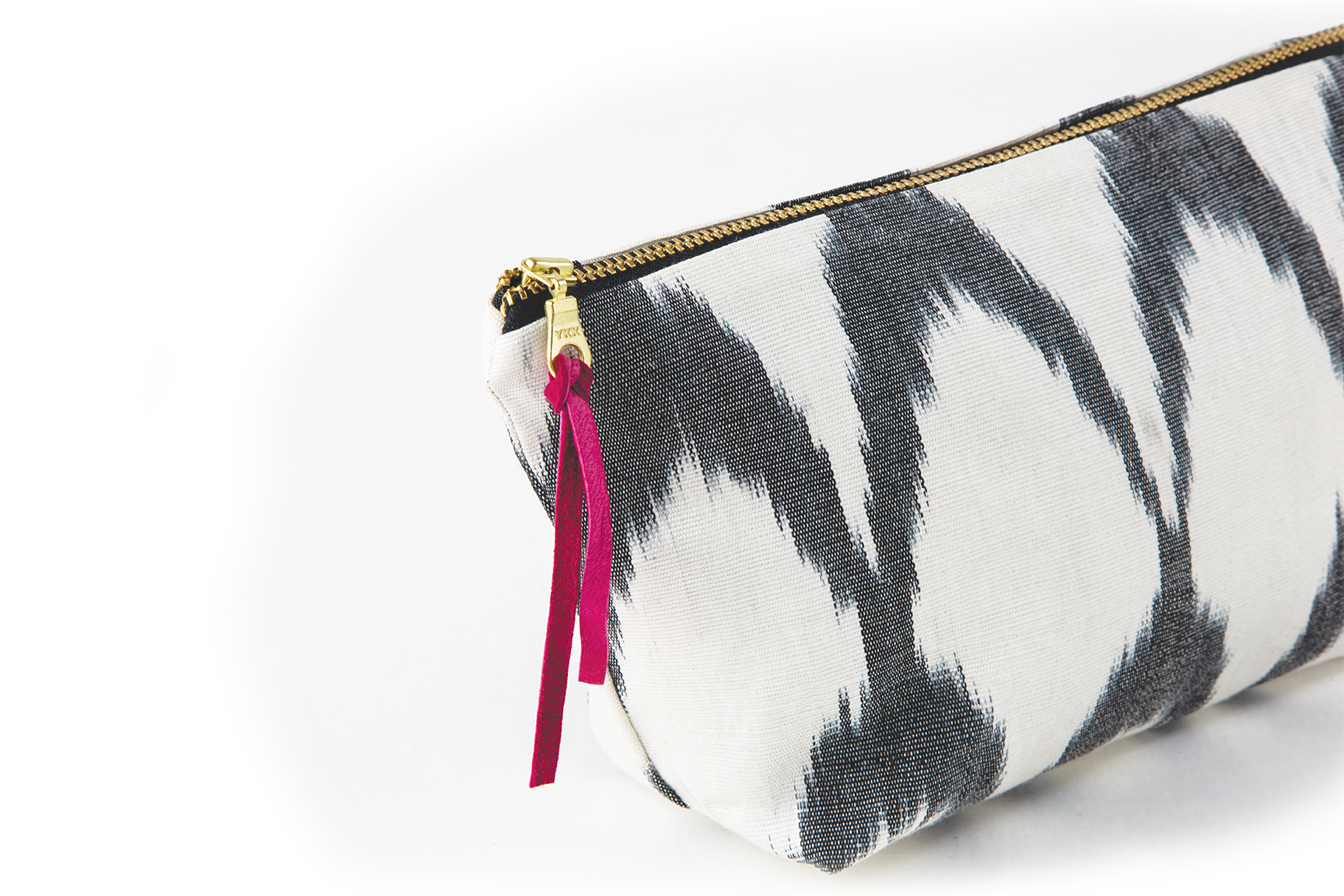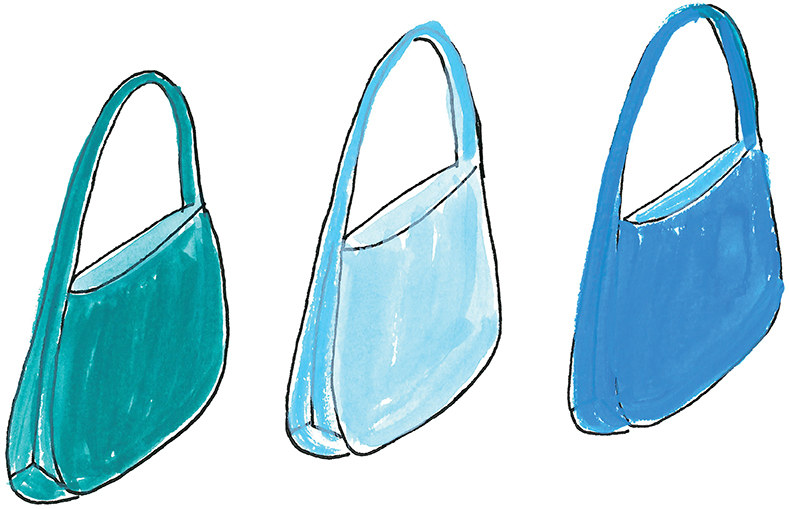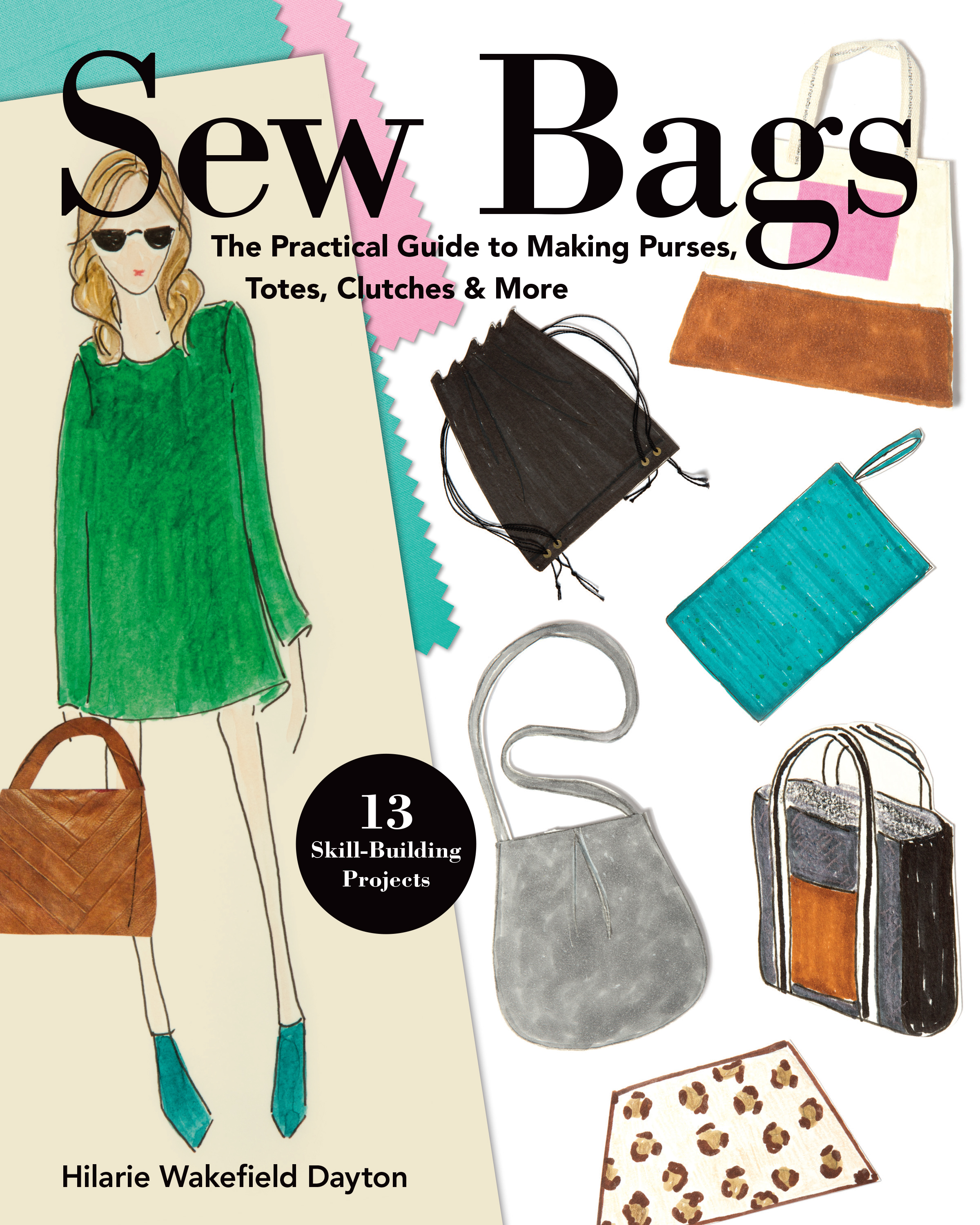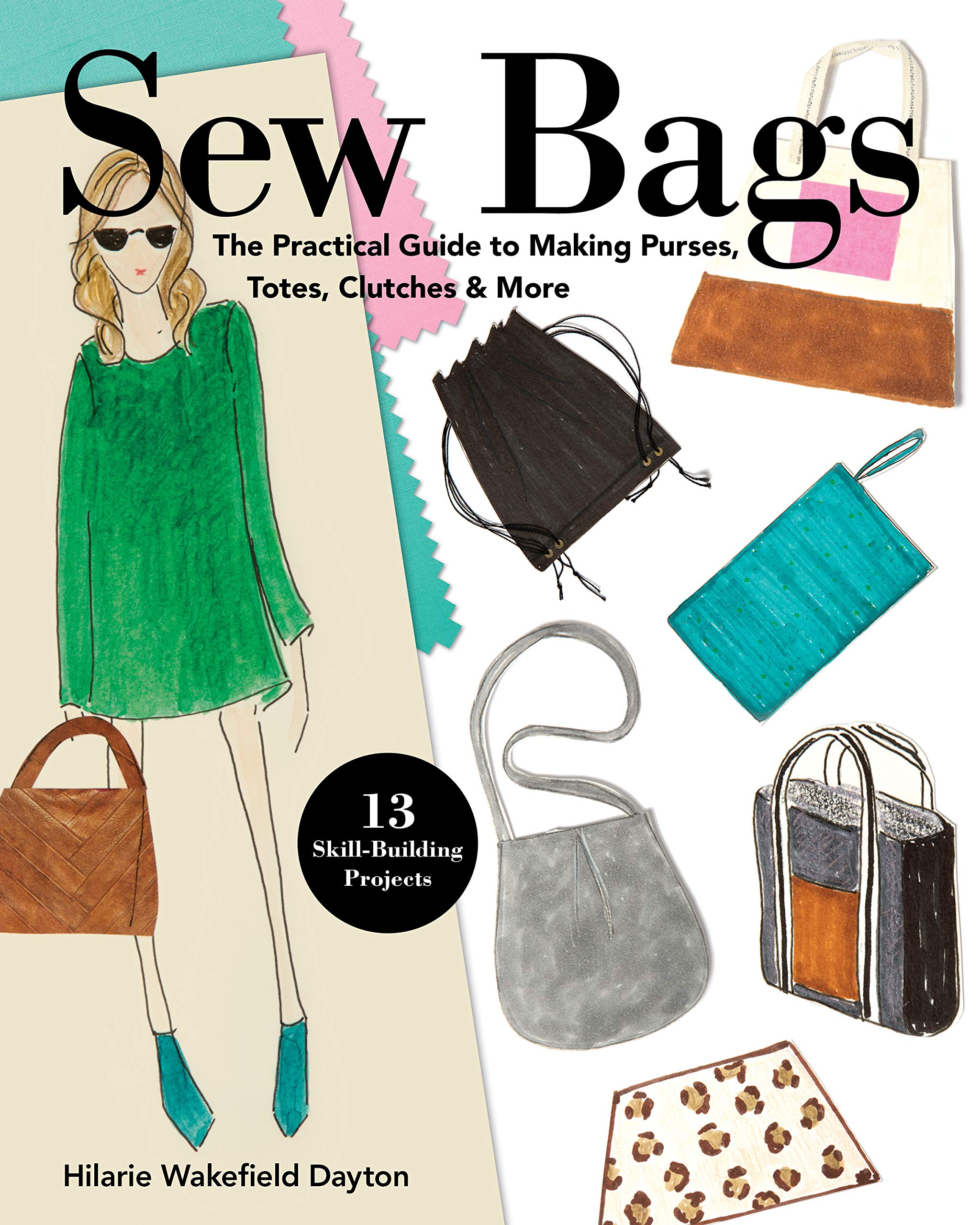How to make an adjustable purse strap
An over-the-shoulder bag doesn’t always work so great when you have kids or say, you need your hands to hold something else- or nothing. Years ago, the cross-body bag made a strong comeback as has the more recent resurgence of the “belt bag” (formally known as the fanny pack). What makes these bags so great is the ability to adjust the length of the strap. Whether you want to adjust it to fit your outing, outfit or just personal strap length preference, with a quick slide of the hardware, you are ready to turn any silhouette into a cross-body and reinvigorate your bag carrying game.
An over-the-shoulder bag doesn’t always work so great when you have kids or say, you need your hands to hold something else- or nothing. Years ago, the cross-body bag made a strong comeback as has the more recent resurgence of the “belt bag” (formally known as the fanny pack). What makes these bags so great is the ability to adjust the length of the strap. Whether you want to adjust it to fit your outing, outfit or just personal strap-length preference, with a quick slide of the hardware, you are ready to turn any silhouette into a cross-body style and reinvigorate your bag-carrying game.
Here’s a quick tutorial to show you how to make an adjustable purse strap!
How to make an adjustable purse strap
Commitment-free straps, for when you can't decide.
The double-fold strap and Savannah Cross-body bag used in this tutorial are projects from my book, Sew Bags: The Practical Guide to Making Purses, Totes, Clutches & More.
Supplies needed:
Strapping plus two 3” long tabs of strapping (to connect a D ring to each side of the bag) I’ll explain:) You can always use leather or cotton webbing straps in the same length and width as an alternative to fabric straps.
2 D-Rings *
1 Strap slider adjuster
The strap, tabs, D-rings and Slider all need to be the same width. In this tutorial, mine are 1/2”.
*If you are unable to find a D-ring the same size and color as your slider, you can always make some after-market improvements. For this tutorial, I used a pair of pliers to remove the center slide and made a set of D-ish (square, actually!) rings. Let’s call them a D+ pair.
Adjustable Straps
Take one of the 3” tabs and slide over the D-ring, folding in half so that the raw edges align. Pin and stitch in place about 3/4- 1” below the hardware. Repeat for the second tab.
Place the slide adjuster right side down, with the strap placed with the outer side facing down, too. Thread the long piece of strap (the tail) through the slide adjuster’s center bar.
Set your sewing machine to a narrow stitch, (around the 2.0 range). Stitch across the raw edge. Before you do this, grab both your top and bobbin thread and wrap around your finger while sewing to guide your machine and ensure that it sews smoothly along the strap’s end and you won’t get a “birds nest”.
Do you see how the edge of the strap is just slightly narrower than the rest of the strap? Depending on your choice of fabric, you could use an iron to spot shrink it, but that is another lesson. By shrinking the end just a bit, it will allow the tab to fold in and the edges to be concealed within the fold.
Fold the end of the strap under about 1” and tuck the raw edge inside that fold about 1/2” and pin.
Stitch in place. Make sure to reinforce with a back stitch to secure.
For a wider strap, I would likely stitch the width of the strap in a rectangular box but for a 1/2” width, one line of stitching should do.
The raw edges are completely concealed. No visible threads!
Threading the Slide Bar
This part is a little bit tricky the first time. Here is a picture and a drawing to help you visualize the steps. First, locate the slider with the center bar. We are going to take the “tail” of the strap and thread it through D-ring (number 1), over the center slide (number 2) and through the opposite D-ring (number 3).
Tabs one and three will be sewn into the side seams of the bag.
This picture is to illustrate the strap in relation to the bag.
In any bag making venture, (generally!) this strap will be added way before the bag is complete. This picture is to give you the general idea (and for you to go get my book:) for a more complete lesson.
Feed the “tail” through the other D-ring tab on the opposite side of the bag. Before you sew - make sure that the strap is facing the correct way and has not twisted in the threading process. Fold and stitch the raw edge of the “tail” to the second side tab.
An adjustable strap can be used with any bag that has a removable strap. Imagine for a moment how this might change your bag carrying experience. One bag, thoughtfully designed with the right hardware and removable straps- could at once be a handbag, crossbody bag, clutch, tote or shoulder bag with the quick switch of a strap. Think about it.
Consider adding an additional “guitar style” strap to elevate your everyday bag.
Straps are such a fun way to introduce an individual approach to a handbag, distinguishing it as its own distinctive piece. I am so excited to see the bags that you are going to make. Please use the hashtag #sewbags on social media- and be sure to tag me @littlestitchstudio.
Are there any specific techniques that you would like to learn? In my next post, I am going to share my favorite bag making fabrics.
XO, Hilarie
Sew Bags; The Blog Tour Re-cap
I teach sewing and design because I believe that everyone possesses some innate creative ability and once you tap into that and discover your passion, it can build confidence that flows into all aspects of life.
These past few weeks, I have had to take a deep dive into my confidence reserve.
As the publication of my book drew near, I knew that it was time to begin to organize a promotional book blog tour. In order for the book to sell, people have to know about it - right? By May, sheer panic set in. Besides the fact that I am terribly introverted and likely would never own a phone, let alone leave the house given the chance, I had to ask complete strangers to read my book and to (PLEASE!) make something from it and share it with the world.
I teach sewing and design because I believe that everyone possesses some innate creative ability and once you tap into that and discover your passion, it can build confidence that flows into all aspects of life.
These past few weeks, I have had to take a deep dive into my own confidence reserve.
As the publication of my book drew near, I knew that it was time to begin to organize a promotional book blog tour. In order for the book to sell, people have to know about it - right? By May, sheer panic set in. Besides the fact that I am terribly introverted and likely would never own a phone, let alone leave the house given the chance, I had to ask complete strangers to read my book and to (PLEASE!) make something from it and share it with the world.
At first, I thought, who am I going to ask? Fabric companies? maybe. Celebrities? nah. Some sewing blogging superstars with comanding audiences? (well…..) Then I began to scroll through my Instagram feed and consider who’s posts I always look forward to reading. Who seems approachable enough to ask? Who would even recognize my name if I did message them? Finally- who has a similar philophsy to teaching and style and would “get” my message. Well- that certainly narrowed down the possibilities considerably. Since I teach sewing, who better to ask then other fashion-forward sewing teachers too.
As it turns out, sewing teachers might just be among the nicest and most approachable people ever! Each of the following women are incredibly busy with a business, projects and families of their own. I owe them a huge thank you for the kindness that they have shown me by generously sharing their time and talents. I hope that each of you will read their posts and draw inspiration from their interpretation of my bag patterns.
Jesy, Needle, Ink and Thread
In a conversation with a friend who is also a sewing teacher, she asked me if I know Jesy. I answered that I didn’t. She told me to check out her work and mentioned that she is exceptionally talented and super nice! As it turns out, besides teaching sewing, Jesy was a former co-owner of Sew Dayton, has contributed a project to a new book as well as sewing custom projects and alterations. If she can pull that off, maybe a small bag wouldn’t be too much to ask:) Jesy agreed and was in!
Jesy made the Bunny Backpack from Sew Bags.
Adorable, right? I love her smile.
Jesy’s Tooth Fairy Pillow project is featured in this book, 50 Little Gifts.
Julia, Old Spool Sewing
Several months ago while looking through Instagram, a friendly smiling face appeared in my feed. I clicked on her post and woah! Another fun sewing studio for kids. Her studio looked bright and filled with lots of smiling kids. Then I saw this cute, cute red wrap top. Well, I do love a wrap top so I commented. She wrote back and then BAMN! #insta-friends:) As it turns out, Julia went to Parson’s and has a degree in Fashion Design which she now uses in her efforts to inspire and cultivate creative talent. So…. I asked Julia too- And she said yes!
Julia made the Abigail Boxed- Bottom tote - complete with hand dyed shibori!
The red wrap-top
Julia was a contestant on Slice TV’s Stitched.
Katie of Katie Kortman
Last summer I saw on Facebook that a new sewing and art studio for kids had opened in a neighboring city. Intrigued, I clicked to find out more. It turns out, Katie had moved in like the week before. I guess as a military mom of 4, she was well practiced in the art of moving and managing kids and projects. I reached out to introduce myself and see if she was taking on new students as I was maxed out at the time and know that families would be thrilled to hear that there was another place to send their kids. This was before Katie blew up Instgram with her hashtag game and spinning color wheel of fun. So- is it safe to say I “knew” Katie before she was famous?? Somehow she fit my project in with everything else she is juggling. Hello- new Spoonflower collection!!
Katie’s handprinted suede Savannah Cross-body bag.
Katie’s fabric collection with Spoonflower.
More fabric and color inspiration!
Tree, Stitchless TV
A few years ago during Makers for Fashion Revolution, #makersforfashrev, I discovered both Tree of Stitchless TV and Kate of Sewing with Kate. Tree had posted a picture of a bathing suit that she had made with a custom printed fabric. I commented that years ago, I worked with a swimwear designer and had made many, many suits over the years. She immediately wrote back and we have followed each other’s feed since. While we have never met in person, I do feel a strong creative connection with Tree. She is absolutely fearless in her approach to both teaching and sewing. And, as many of you know, I loathe TV and YouTube but make a special point of sharing her videos and tutorials with my students. They are that good!
One thing that Tree always emphasizes is her belief that with a bit of experience, anyone can learn to design a bag or garment and experience the absolute thrill of using and wearing something that you made yourself.
When you see something like this, it is an immediate signifier that the person both knows what they are doing and is fearless in her approach.
How beautiful is this coat that the wearer made in one of Tree’s workshops?
Ribbon embroidery on mohair. Seriously.
Kate, Sewing with Kate
Kate had me at first glance of her Sashiko. Anyone who spends that much time sewing by hand is someone who really understands the importance of attention to detail. Hand sewing allows a much finer degree of control over the fabric and fit, compared with using a machine. Kate understands that. Also- perhaps since she is a mom of a bunch of kids, hand sewing is portable and thus, gets done and is a great way to keep your hands busy while endless waiting for kid sports and activities.
After gushing over her sashiko samplers and bags (she has an etsy shop with patterns too! ) I then saw her clothes. That was it- I was a fan for life. Come on now, how freaking fantastic are these next two dresses? The embellishment and that leather. So I had to ask….would you make one of my bags?
Kate made the Rachel Drawstring Pouch- and hand stitched the sashiko pattern before sewing the bag.
This proves that there is nothing better than a well- fitting garment with one stand out feature.
Leather shoulder inset of my dreams.
I just love how each of these ladies took the original pattern and spun it to create something that is unique to their style. That is my ultimate goal as a pattern maker, sewing teacher and now author. To impart the lesson that you don’t have to just follow the pattern; treat the suggestions in your pattern as starting points and use your own imagination and skills to make the bag that suits you.
Happy Sewing!
XOXO, Hilarie
Please remember to tag me on social media with your makes using the hashtag #sewbags. I can’t wait to see what you share.
Understanding Purse Straps and Handles
I am so thrilled that my blog tour week is finally here! My new book: Sew Bags: The Practical Guide to Making Purses, Totes, Clutches & More; 13 Skill-Building Projects is written as a guide, complete with patterns and step by step instructions ,to help you create the bag of your dreams. This week, a few gracious sewing friends from across the globe are generously giving us their time and sharing their thoughts and projects from my book. I just can’t wait to see what they have made.
After a lovely introduction from my friends at C&T yesterday, I thought that I would follow up today by sharing my thoughts on creating a bag that suits you as the wearer. A purse is an opportunity to show the world your personal style and the silhouette that best represents you. Which means: any old bag just won’t do. Like it or not, your purse says a lot about you. Are you a mom that has to carry everything for everyone? Are you a just the basics and cut it to the essentials? Are you out for friends with the night and carrying a fun clutch? Besides toting the essentials, a purse is also an accessory-a blank canvases that can project your mood, your favorite trend, or your aesthetic of the moment.
Since everyone is different, there are also adjustments you can make to a sewing pattern that will customize the bag perfectly to your body and individual needs to ensure that your bag is useful as well as beautiful. I’m all about customization and straps and handles are a great way to both customize and accessorize.
I am so thrilled that my blog tour week is finally here! My new book: Sew Bags: The Practical Guide to Making Purses, Totes, Clutches & More; 13 Skill-Building Projects is written as a guide, complete with patterns and step by step instructions ,to help you create the bag of your dreams. This week, a few gracious sewing friends from across the globe are generously giving us their time and sharing their thoughts and projects from my book. I just can’t wait to see what they have made.
I hope that you follow along to check out their take on the projects and enter to win a copy of Sew Bags at each stop! You can enter the C&T giveaway HERE.
Tuesday, 7/1: C&T Publishing
Wednesday, 7/2: Hilarie Wakefield Dayton of Little Stitch Studio Norfolk
Thursday, 7/3: Katie Kortman
Julia of Old Spool Sewing
Friday, 7/4: Jessy of Needle, Ink and Thread
StitchlessTV (YouTube video)
Monday, 7/8: Sewing with Kate
This week on Instagram, look for TopStitch Atlantas Instagram story .
After a lovely introduction from my friends at C&T yesterday, I thought that I would follow up today by sharing my thoughts on creating a bag that suits you as the wearer. A purse is an opportunity to show the world your personal style and the silhouette that best represents you. Which means: any old bag just won’t do. Like it or not, your purse says a lot about you. Are you a mom that has to carry everything for everyone? Are you a just the basics and cut it to the essentials? Are you out for friends with the night and carrying a fun clutch? Besides toting the essentials, a purse is also an accessory-a blank canvases that can project your mood, your favorite trend, or your aesthetic of the moment.
Since everyone is different, there are also adjustments you can make to a sewing pattern that will customize the bag perfectly to your body and individual needs to ensure that your bag is useful as well as beautiful. I’m all about customization and straps and handles are a great way to both customize and accessorize.
STRAPS AND HANDLES
Bag straps and handles are so much more than a mere function of convenience. They are exciting design features on their own. Not to mention, major considerations in determining the usefulness of any given bag.
We all have fallen in love with a bag that had handles that just weren’t right: Too thin and they cut into your arm or shoulder or too wide and they slide off. It is important to consider how you will carry your bag as well as what it can fit. Do you wear it on your shoulder? Over a coat? On the crook of your arm? In your hand? Keep in mind that smaller bags use thinner straps and larger bags use wider straps.
The most challenging part of sewing a bag is that you can't try it on until after it’s finished. And, if it doesn't fit right, you can't just exchange it for another size. Finding the right fit before you start sewing can solve this problem. I suggest that before you make any bag, stop and consider the strap length before cutting into your fabric. This is such an easy way to begin to customize the pattern and make the finished bag comfortable and fit you.
The Heidi Side Panel tote from my book, Sew Bags: The Practical Guide to Making Purses, Totes, Clutches and More, in two ways. The first, with leather straps set with rivets and extra handy D-ring detail, the second with cotton webbing strap detail and leather front patch pocket.
Strap Length and Drop
There are a couple of ways to determine the overall size and fit of a bag before you begin. One way is to measure a bag that you already own and know it fits just the way you like. (This is also a great trick when making someone else a bag as a surprise. You can simply borrow their bag for minute and take a quick measurement.) The second way is to make a paper mock-up of your bag and using a ribbon and clips or pins, play with the straps length and width until you find the one that is the most flattering and comfortable. Then measure that ribbon from end to end to determine the length. Write that number down- because it may need to be adjusted depending on the strap placement on the bag, the hardware used and what material the strap is made out of.
A tote mock-up made of oaktag. Handles are clipped to the top to test for fit.
In this drawstring backpack mock-up, I used tissue paper so that it would better hold a “cinched effect”. The cord is wrapped around the cinched opening and pulled to the bottom. Once I was happy with the way that it fit, I measured the cord and recorded that as my strap length.
Dress forms playing dress-up with the bags.
This is a good time to refer to the bag pattern. Where is the strap placed? It is aligned at the top of the bag or a few inches down, if you are making out of fabric, you’ll need to account for the seam allowance. Would you prefer the added polish and flexibility of a D-ring? If so, then you will need to consider the diameter of the ring to the overall length.
Here is a handy guide to use as a general rule of thumb in determining the appropriate strap length for each style of bag. Remember- this is just for reference, make the length that suits you.
1. Wristlet (6 to 10 inches)
2. Short Handle (12 to 20 inches)
3. Shoulder (30 inches)
4. Long Shoulder (40 inches)
5. Crossbody (50 inches)
6. Extra Long (60 inches)
7. Adjustable (22 to 60 inches)
Drop Length
After you determine the optimal length for your strap, we need to talk about the drop length. Drop length is defined as the distance between the top of the bag and the top of the handles.
The Wesley Shoulder Bag from my book, Sew Bags: The Practical Guide to Making Purses, Totes, Clutches and More. Compare the drop of the bag to the length of the arm. Would that be comfortable for you to carry?
How do you like to wear your bag? Some people like their tote to sit close to their body, while others want a little more room. Thinking about which one you'd prefer can help you decide on the perfect drop length. Choosing a longer drop length can make a big difference in giving you more space to maneuver. (Like when you are standing at the door holding onto a kid and reaching into the bag that is on your shoulder and trying not to break your wrist.)
If you're unsure about the right length, the easiest way to get an idea of which drop length would work best for you is again, measuring a bag that you already own and find comfortable to carry. Even if your current bag is a little snug for your taste, measuring the drop length of the handles can still give you an idea of what would work best for you.
The drop length of a bag strap may be altered by an adjustable slide. *blog post coming soon!
Fabric and Materials
Once you have the length, width and drop determined- now it is time to consider what fabric or material you are going to make your straps or handles out of. Lately designers are shedding a new light on handles as the primary design feature of a handbag. Take cotton webbing for example. It is the new design detail that’s been featured on bags of every price point. Inspired by the logo-mania trend of recent seasons, these woven wonders are giving our everyday bags a whole new lease on life, lending them a high-fashion feel. But the excitement doesn’t end there. You can also make the strap with a chain, leather (genuine or imitation), Kraft-tex, fabric or any combination of the bunch.
A recent visit to JoAnn’s Fabric confirmed the webbing strap trend!
See how a strap can change the entire look and function of a bag? This bag is the Morganne bag in my book. Made in quilting cotton with a contrast cross-body strap, it is the perfect bag for a child. In silk with a gold chain, you are ready to go out on the town.
Straps are such a fun way to introduce an individual approach to a handbag, distinguishing it as its own distinctive piece. I am so excited to see the bags that you are going to make. Please use the hashtag #sewbags on social media- and be sure to tag me @littlestitchstudio.
In my next post, I am going to explore some essential bag making hardware: swivel hooks, slide adjusters, and rings.
XO, Hilarie
One Size Does Not Fit All
The ultimate expression of my obsession with customization, begins with a beautiful, simple everyday bag. Each bag in my book, Sew Bags: The Practical Guide to Making Purses, Totes, Clutches & More was designed with this in mind. The clean lines and thoughtful details invite you, the reader, to be the designer. While you can certainly make a bag exactly as the pattern directs, if you can manage a little extra time, in addition to a small stroke of creativity, the ability to make handbags totally your own could be a serious game changer.
The fun begins when you start to break the design down to the component parts. Fabric, hardware, handles, straps and decorative accessories can be mixed and matched to create a bag that’s uniquely yours.
The ultimate expression of my obsession with customization, begins with a beautiful, simple everyday bag. Each bag in my book, Sew Bags: The Practical Guide to Making Purses, Totes, Clutches & More was designed with this in mind. The clean lines and thoughtful details invite you, the reader, to be the designer. While you can certainly make a bag exactly as the pattern directs, if you can manage a little extra time, in addition to a small stroke of creativity, the ability to make handbags totally your own could be a serious game changer.
The fun begins when you start to break the design down to the component parts. Fabric, hardware, handles, straps and decorative accessories can be mixed and matched to create a bag that’s uniquely yours.
Perfect design is a matter of personal expression and preference. What would your dream handbag look like? For me, it is almost always some kind of tote-style bag. I carry a lot of stuff around and need a sturdy bag that looks great but is also comfortable to carry and functional. Often times though when I see a great bag that I love, it is missing some essential requirement. More often than not, it doesn’t have enough pockets or the strap length is just not right. Since my overall goal is to encourage you to be a part of the design process, I intentionally left out interior pockets in the bags. This allows you, as the designer to make those decisions yourself.
I encourage you as you work through a pattern to consider the overall size and function of the project as well as the fabric and color. (Being involved in the design process can be just as fulfilling as actually cutting and sewing your bag.) To that end, you can look forward to future posts that will help to enrich your experience. First up- Straps and Handles.
XO, Hilarie
Sew Bags- Behind the Scenes (Seams!)
I love, love, love hearing from all of you that have purchased my book, Sew Bags! Thank you! It makes me so very happy to hear how much you are enjoying it. This has been such a meaningful project for me to work on and I could not have done it without the help and dedication of so many talented individuals such as my publisher, Stash Books, an imprint of C&T, Kelly Burgoyne, an amazing photographer, April Mostek, book designer, editors Liz Aneloski, Debbie Rodgers and Beth Baumgartel, and Acquisitions Editor Roxane Cerda. And of course to all of you!! My readers and students who really make all that I do so meaningful.
As for the book itself, where do I start? When I set out to write the book over two years ago, I had a vision of what it might be like, both the experience of writing and what the final book would be like. While the book is so much better than I had envisioned, the actual writing process was really very difficult for me. It took me much longer to prepare each step and thoughtfully communicate clearly yet concisely what I wanted the reader to learn. (I have trouble with distraction on a good day- this project required a few overnight hotel stays and a level of concentration that I was no longer familiar with.) Teaching has kept me grounded in the beginner’s experience. The projects that they are interested in making, the questions that they ask and the troubles that they encounter along the way. I wanted to be certain that each project and step would build confidence instead of frustration. What a valuable experience this was for me! I know that since writing this book, I have become a better teacher.
I love, love, love hearing from all of you that have purchased my book, Sew Bags! Thank you! It makes me so very happy to hear how much you are enjoying it. This has been such a meaningful project for me to work on and I could not have done it without the help and dedication of so many talented individuals such as my publisher, Stash Books, an imprint of C&T Publishing, Kelly Burgoyne, an amazing photographer, April Mostek, book designer, editors Liz Aneloski, Debbie Rodgers and Beth Baumgartel, and, Acquisitions Editor Roxane Cerda. And of course to all of you!! My readers and students who really make all that I do so meaningful.
As for the book itself, where do I start? When I set out to write the book over two years ago, I had a vision of what it might be like, both the experience of writing and what the final book would be like. While the book is so much better than I had envisioned, the actual writing process was really very difficult for me. It took me much longer to prepare each step and thoughtfully communicate clearly yet concisely what I wanted the reader to learn. (I have trouble with distraction on a good day- this project required a few overnight hotel stays and a level of concentration that I was no longer familiar with.) Teaching has kept me grounded in the beginner’s experience. The projects that they are interested in making, the questions that they ask and the troubles that they encounter along the way. I wanted to be certain that each project and step would build confidence instead of frustration. What a valuable experience this was for me! I know that since writing this book, I have become a better teacher.
Hotel Room, night one. Lots of coffee, zero sleep.
Inspiration for the color wheel art finally struck! This is actually one of my very favorite pieces hanging in the shop and one that lots of my students always ask to make. Guess what? The upcoming campers in next month’s Art of Design Camp get to make this project.
The book is about making bags, of course. But really, the lessons are based on classic sewing techniques. Master these skills, and they will forever be part of your repertoire. My goal is to teach you how to sew in such a way that it is not so much about the specific project, but more about the how’s and why’s of each skill. Once you have a basic understanding of construction, the logic of each project becomes considerably clearer.
Since the projects are bags, they had to be fantastic looking! So many sewing books that I see that are about bag making are either too “crafty looking” or very intensive and require a level of skill, time and supplies that many of my students don’t have. I wanted my book to be different. Part aspirational but definitely attainable. I want it to attract someone with little skill and for them to be excited to make and carry or someone who already knows how to sew, but doesn’t want to spend weeks working on a bag. For this, the bags needed to be simple in design but look like something I would (do!) actually carry.
The projects are grouped into four categories: shoulder-strap bags, tote bags, zipper clutches, and drawstring bags. The first bag sets the skill, and the rest build on that. You will master techniques such as making straps, pleats, boxing the bottom of a bag (to create a base), making pockets, applying bias tape, and installing zippers.
Each project has step by step photos and written instructions. Plus some illustrations! I was so thrilled and flat out stunned during the book writing process when my editor asked if I would considering sharing more of my illustrations. Never did I imagine that they would be on the cover! You will find lots of illustrations throughout the book too. In fact, one of my favorite book details is how they cropped tiny bits a color exercise from the sketch book that I sent in and use them throughout the book to highlight sewing tips.
Trio of Wesley Shoulder Bags.
Color Scale Exercise
Isn’t that paint detail pretty? I love how it highlights that very important point:)
I can’t wait to see what you come up with based on the projects in this book. I hope you share! Please tag #sewbags on any Instagram or Facebook posts, etc, when sharing your creations. I hope to have a well of projects made by you that we can all use as inspiration. Any of these bags can be made in so many ways- I cannot wait to see what your interpretation might be.
If you are in Norfolk next weekend on June 29, please stop by my shop between 3 and 5 PM for some fun as we celebrate the launch of Sew Bags!
You can get your own copy of Sew Bags: The Practical Guide to Making Purses, Totes, Clutches & More; 13 Skill-Building Projects today through Amazon, Barnes & Noble, Indie Bound, Powells . Signed copies are available through my local, independent bookstore, Prince Books, in Norfolk, VA. They ship too:)
XOXO, Hilarie
Sew Bags, My New Book is Available Now!
I’m so excited to share that my new book, Sew Bags: The Practical Guide to Making Purses, Totes, Clutches & More; 13 Skill-Building Projects, was published with C&T/ Stash Books on June 7, 2019. This book brings style and attention to designing and sewing your own bags. It features step by step instructions, along with pictures and full-sized patterns, to make 13 different purses, totes, clutches, and drawstring bags. The bags showcase current trends in handbag design-but draw on traditional sewing and construction techniques. It’s available widely at independent bookstores, online booksellers, and anywhere books are sold.
You can ORDER Sew Bags online through Amazon, Barnes & Noble, Indie Bound, Powells or locally.
SIGNED COPIES are available through my local, independent bookstore, Prince Books, in Norfolk, VA. Prince Books ships and delivers copies too.
For INTERNATIONAL ORDERS online visit website Book Depository or check local bookshops to place a special order. For wholesale accounts, please email sales@ctpub.com to contact C&T directly.
I’m so excited to share that my new book, Sew Bags: The Practical Guide to Making Purses, Totes, Clutches & More; 13 Skill-Building Projects, was published with C&T/ Stash Books on June 7, 2019.
I cannot believe that my book, Sew Bags, is actually in my hands. After more than two years of making the bags, writing the instructions, laying out the how-tos, drawing the illustrations, editing, then editing some more, while working with a publishing dream team, it is here. It still seems so unreal and exciting. I cannot wait to share it with all of you.
I am finalizing the details for my book celebration party, workshops and book tour and hope to announce most of the events in my July newsletter.
Book details and where to buy. You want to know all about that, right?
This book brings style and attention to designing and sewing your own bags. It features step by step instructions, along with pictures and full-sized patterns, to make 13 different purses, totes, clutches, and drawstring bags. The bags showcase current trends in handbag design-but draw on traditional sewing and construction techniques. It’s available widely at independent bookstores, online booksellers, and anywhere books are sold.
You can ORDER Sew Bags online through Amazon, Barnes & Noble, Indie Bound, Powells or locally.
SIGNED COPIES are available through my local, independent bookstore, Prince Books, in Norfolk, VA. Prince Books ships and delivers copies too.
For INTERNATIONAL ORDERS online visit website Book Depository or check local bookshops to place a special order. For wholesale accounts, please email sales@ctpub.com to contact C&T directly.
Who is ready to start sewing? XOXO
Setting the Scene for 2019
If learning to sew is one of your goals for this new year, I have just the classes for you.
If learning to sew is one of your new years resolutions, I have just the classes for you.
Beginning January 19, I will host monthly learn to sew classes for adults. As I haven’t found just the right day and time to meet everyone’s schedule, some classes will be offered Saturday mornings, others on a week night.
Since I love making bags (and have written a new book on bag making!) They are so quick, relatively easy and near instant gratification. Look forward to lots of bag making opportunities.
January’s Adult Sewing Workshop : Zipper Clutch Purse- In this skill building class you will learn all the basics of sewing, including learning the parts of the sewing machine and how to use them, learn how to wind a bobbin, thread the machine and troubleshoot common issues. You'll also learn how to cut and pin fabric, learn the basics of understanding seam allowance, straight stitching, sewing curves and corners, and inserting a zipper.
$55, All supplies included.
February workshop ( date pending) Lace Bralette, it is both beautiful and functional. Some sewing experience required.
What would you like to learn to make?
Happy new year!
Hilarie XOXO
My book! Sew Bags: The Practical Guide to Making Purses, Totes, Clutches & More; 13 Skill-Building Projects
Friends, I’m so excited to share that my book, “Sew Bags: The Practical Guide to Making Purses, Totes, Clutches & More; 13 Skill-Building Projects”. This project has been two years in the making and will be published by Stash Books, in June 2019.
Friends, I’m so excited to share that my book, “Sew Bags: The Practical Guide to Making Purses, Totes, Clutches & More; 13 Skill-Building Projects”. This project has been two years in the making and will be published by Stash Books, in June 2019.
I love making beautiful things, maybe a bit obsessively so, and it’s been a dream to create my first sewing book. I had such a specific vision for this and knew that I wanted it to be first and foremost inspiring, instructive, encouraging, fashionable and full of exciting projects. I have loved writing this book, and I hope that you’re going to enjoy reading and sewing from it.
This book brings style and attention to designing and sewing your own bags. It features step by step instructions (with pictures!) to make 13 different purses, totes, clutches, and drawstring bags. My goal when writing this, was to create a book filled with projects that you’ll want to make again and again.
Not only are the projects unique and fun, but the book is also beautifully produced (something that you’ve come to expect from all C&T Publishing.) It is a paperback book with a cover that I illustrated, featuring several of the book’s projects. Also included are two large removable sheets of full-sized pattern pieces for each project.
The book begins shipping next spring, but it is available for pre-order from Amazon and Barnes and Noble. Once it is released, I’ll also make autographed copies available on my website and in the shop.
Look for some glimpses of the book over the coming months, and start checking existing projects off your sewing list-because I think you’ll want to make several projects from this book!
Aster Clutch Pattern Testing
The Aster Clutch is a PDF sewing pattern by Hilarie Dayton. This PDF sewing pattern makes a foldover clutch purse and a zipper pouch. The finished measurements are 12”x 12” for the large and 11”x 8” for the medium.
In the months between designing and releasing a pattern, there is a lot of work going on. Not just by me, but by a team of women that are incredibly talented and enormously patient. They are pattern testers. What is a pattern tester, you might ask? A pattern tester is essential to the process of pattern production. Long before a pattern emerges, these women check the pattern, fit and instruction. I send them a finished draft of the pattern and instructions and ask them to follow along to make the item. When you look at something that you have been drawing and writing for months, it's hard to see it objectively. Compound that with having dyslexia and you can imagine the gratitude I feel for them! They truly help me make my patterns the best that they can be. My sewing patterns would not be nearly as successful without the contribution of these incredible friends.
I want to highlight the work three of these friends did for the Aster Clutch Bag pattern. Perhaps it will inspire you to make your own. Their fabric choices and colors are such a treat!
This clutch was made by Patty, at MadebyPade, who is also a clinical psychologist by profession and makes gorgeous bags and accessories in her "off time". Look how she put that zipper in. Thats a pro job, there!
Nellie, made this bag with the stunning contrast piping, tie and lining. I love the tension of the muted pattern and the neon trim! Nellie also tested my Magnolia Tunic Pattern, the first pattern that I introduced this year. She is a brave and talented friend:)
This one is in a beautiful black suede. Suede! Missy was awfully brave to attempt this pattern draft on this gorgeous leather. That Schiaparelli pink with the black suede is really something to talk about. Speaking of Elsa Schiaparelli, she is the one who began to design using exposed zippers. Don't you love that fashion in the 1940's is so relevant today? I think the exposed chunky metal zippers almost feel like jewelry.
Thank you ladies for your time, work and effort. You really are the best at telling me where I need to clarify my instructions, pattern and technique.
Are you are up for the challenge of test-driving some of my upcoming patterns, if so, let me know! I have a few new patterns in the works.
XO, Hilarie
Aster Fold Over Clutch Bag and Limited Edition Clutches
Photo Credit: Caty Gene Studio
You may have noticed that I updated my etsy shop. Besides PDF sewing patterns, I am offering a few handmade items. This past week I listed several clutch bags. They are fashioned in the classic zipper foldover style. Several months ago, a dear friend called and told me that she was moving to Washington, DC for a new job. And, would I like to buy her considerable inventory of high-end decorator fabric. (Well, of course I would! ) It took me a few trips back and forth to get it all home then a week or two to catalogue and organize it.
Months later, I am finally putting it to good use. These purses are just a sampling of the great fabrics that are in my collection. More styles and options to come.
I have been busy working on yet another sewing pattern. The Aster Foldover Clutch. Yes, the very same clutch that I am offering readymade. Next week, I hope to have an e-book, step-by-step sewing pattern ready for testing. The full pattern will be offered for sale as a PDF download in my etsy shop. Don't worry, the pattern is written as a teaching pattern with step-by-step colored pictures and text.
Would you be interested in being a pattern tester?

